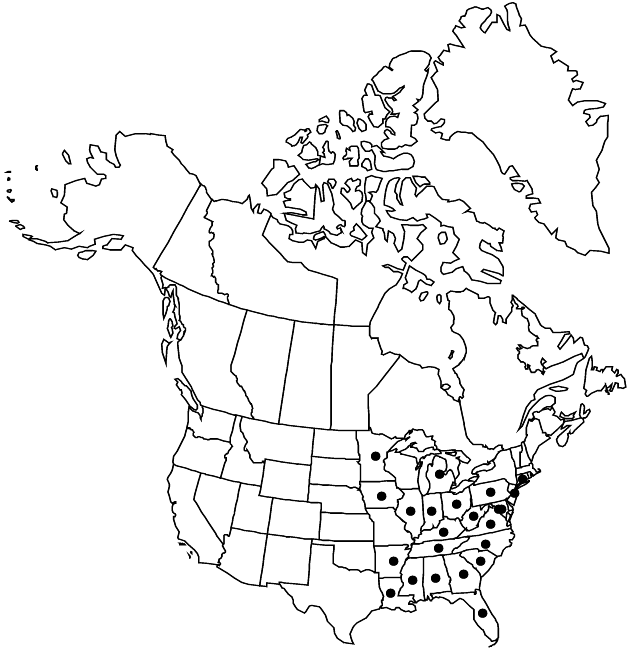Helianthus microcephalus
Fl. N. Amer. 2: 329. 1842.
Perennials, 20–200 cm (with crown buds). Stems erect, glabrous. Leaves cauline; opposite or alternate; petioles 0.3–3 cm; blades (greenish, at least abaxially, 3-nerved at bases) lanceolate, 7.2–15.5 × 1.3–4 cm, bases cuneate, margins entire or serrate, abaxial faces tomentulose, densely gland-dotted. Heads (1–)3–15+. Peduncles 1–3(–8) cm. Involucres cylindric, 5–7 mm diam. Phyllaries 12–17, lance-linear, 3–6.5 × 1.5–2.5 mm, (margins ciliate) apices acuminate, abaxial faces glabrate, not gland-dotted. Paleae 5–7 mm, 3-toothed (apices hairy). Ray florets 5–8; laminae 10–14 mm. Disc florets 15–22; corollas 4–5.5 mm, lobes yellow; anthers dark, appendages dark. Cypselae 3.5–4.2 mm, glabrous; pappi of 2 aristate scales 1.5–2.2 mm. 2n = 34.
Phenology: Flowering late summer–fall.
Habitat: Open woodlands, shaded roadsides
Elevation: 10–900 m
Distribution

Ala., Ark., Conn., D.C., Fla., Ga., Ill., Ind., Iowa, Ky., La., Md., Mich., Minn., Miss., N.J., N.C., Ohio, Pa., S.C., Tenn., Va., W.Va.
Discussion
Helianthus microcephalus is distinguished by its relatively small heads, which have relatively few phyllaries, ray florets, and disc florets, as well as the usually tomentulose abaxial faces of the leaves. Hybrids with H. divaricatus are known.
Selected References
None.